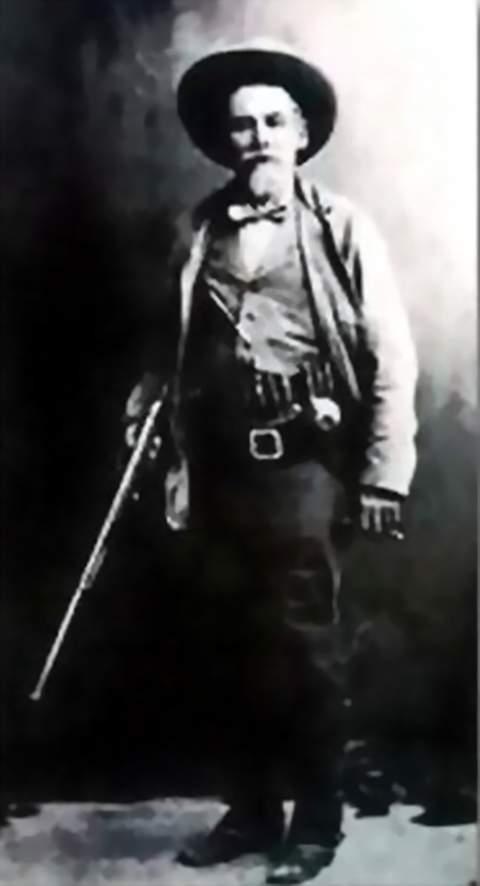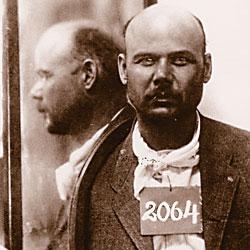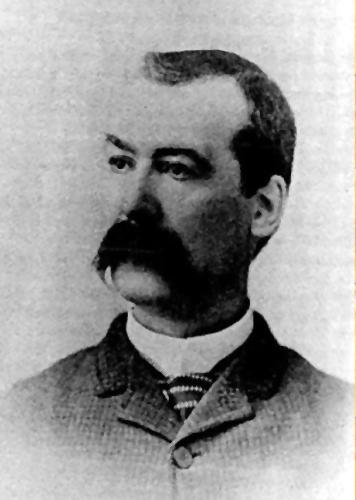.jpg)
d: 1902
Augustine Chacon
Summary
Name:
Augustine ChaconNickname:
El Peludo (The Hairy One)Years Active:
1890 - 1902Status:
ExecutedClass:
MurdererVictims:
1+Method:
Shooting / StabbingDeath:
November 21, 1902Nationality:
Mexico.jpg)
d: 1902
Augustine Chacon
Summary: Murderer
Name:
Augustine ChaconNickname:
El Peludo (The Hairy One)Status:
ExecutedVictims:
1+Method:
Shooting / StabbingNationality:
MexicoDeath:
November 21, 1902Years Active:
1890 - 1902bio
Augustine Chacon was born in 1861 in Sonora, Mexico. Details of his early life remain scarce, but before his descent into outlawry, Chacon briefly served as a peace officer in the town of Sierra del Tigre. He also worked as a hauler of firewood and ore, doing heavy labor in the harsh terrain of the borderlands.
In 1888 or 1889, Chacon crossed into the Arizona Territory and established himself in the town of Morenci. There, he built a reputation as a skilled cowboy, quick with a horse and respected by many for his work ethic. His growing popularity, however, didn’t protect him from conflict. In 1890, after a dispute with his employer, rancher Ben Ollney, over three months of unpaid wages, Chacon rode away bitter and frustrated. The next day, after drinking heavily, he returned to demand payment. When Ollney refused again and mocked him, Chacon shot and killed the rancher in a heated confrontation.
Moments later, five of Ollney’s cowboys rushed to defend their employer. Chacon, armed and furious, held his ground and killed four of them in a quick and deadly shootout. The fifth man fled to Whitlock Springs to raise the alarm. Ollney’s brother soon formed a posse of six men to hunt Chacon down. They cornered him in a box canyon, but instead of surrendering, Chacon charged them on horseback with twin revolvers blazing. Four more men died. Chacon escaped with only a minor wound to his arm.
murder story
Augustine Chacon’s career as an outlaw began with a violent dispute in 1890 that set the tone for the rest of his life. After moving to Morenci, Arizona, he worked as a cowboy and earned a reputation for skill and reliability. Trouble arose when his employer, Ben Ollney, refused to pay him three months of wages. Chacon left the ranch in anger, spent the night drinking, and returned the next day armed and determined to demand payment. When Ollney not only refused again but also mocked him publicly, the argument escalated. Ollney reached for his pistol, but Chacon drew faster and shot him dead. Almost immediately, five cowboys came to their employer’s aid. Chacon stood his ground, firing until four of them lay dead and the fifth fled in panic. That surviving cowboy rode to Whitlock Springs to raise an alarm. Ben Ollney’s brother quickly organized a posse of six men who pursued Chacon to a box canyon. Instead of surrendering, Chacon rode at them with his revolvers blazing. Four more men were killed, and Chacon escaped with only a minor wound to his arm.
This bloody episode marked Chacon as one of the most dangerous men in Arizona Territory. Rumors swirled that he continued his rampage by slaughtering members of the Ollney family at Whitlock Springs two days later, though Chacon insisted he was elsewhere tending to his wound at a Mexican woodcutter’s camp. Despite the uncertainty of those claims, Chacon was eventually arrested near Fort Apache after being discovered visiting a young woman. His notoriety almost led to his lynching, but he managed to escape from jail by cutting through the bars with a hacksaw, reportedly smuggled to him by Nellie Ollney, the daughter of the rancher he had killed. Locals whispered that Nellie did not believe he had murdered her father and that she had aided his escape.
Following his flight, Chacon became the leader of a gang of bandits who operated on both sides of the U.S.–Mexico border. They were accused of stealing cattle, raiding ranches, and robbing stagecoaches, often retreating to the rugged Sierra Madre mountains of Sonora. Lawmen such as Sheriff John Horton Slaughter pursued them relentlessly. At one point, Slaughter and his deputy Burt Alvord nearly captured Chacon in a tent near Tombstone. When ordered to surrender, Chacon slipped out the back and fled into the darkness. Slaughter fired his shotgun and believed he had killed him, but Chacon had merely stumbled into a ditch and disappeared.

Throughout the mid-1890s, Chacon and his followers were linked to numerous violent crimes. In 1894, two employees of the Detroit Copper Company were murdered near Eagle Creek, and suspicion fell immediately on the Chacon gang, who were known to frequent the area. Later that year, the body of an old miner was found hidden in an abandoned mine shaft, and again the gang was blamed. Reports also tied Chacon’s men to the robbery of a casino in Jerome, where four people were killed, and to a stagecoach holdup outside Phoenix. In another case, several sheep shearers were discovered murdered at their camp, and locals assumed Chacon was responsible.
The most famous confrontation of Chacon’s career came in December 1895 during the gunfight at Morenci. Chacon and two of his men, Pilar Franco and Leonardo Morales, robbed McCormack’s general store, stabbing the manager, Paul Becker, and looting supplies. They retreated to a cabin on a hill overlooking the town. Constable Davis of Graham County gathered a posse and followed their trail directly to the hideout. As the posse approached, Chacon and his men suddenly charged from the cabin, running toward a cluster of boulders while firing wildly. The shootout raged for several moments, with both sides exchanging heavy fire. Eventually, the posse demanded surrender. Deputy Pablo Salcido volunteered to approach the gang to negotiate. When he exposed himself, Chacon shot him in the head with a rifle, killing him instantly. Gunfire erupted again and did not cease until more than three hundred rounds had been fired. Franco and Morales attempted to flee but were gunned down. Chacon, badly wounded in the chest and shoulder, was captured alive.
The trial that followed was swift. Chacon was convicted of the murder of Pablo Salcido and sentenced to hang in 1896. He appealed the conviction, claiming that Salcido had been his friend and that he would never have killed him. His appeal failed, and he was returned to Solomonville to await execution. On June 9, 1897, he escaped once more by cutting through the adobe walls of the jail. Some historians believe the guards ignored the noise, while others claim fellow prisoners sang and played guitars to mask the sound. Another account suggests a young woman distracted the jailer, making it easier for Chacon to slip away. Whatever the truth, he successfully vanished again into Sonora.
For the next several years, Chacon continued his life as a bandit, and some reports even claim he joined the Rurales, Mexico’s rural police force, for a short time before returning to outlaw life after a dispute with another soldier. His legend grew, and so did frustration among Arizona officials who were embarrassed that he could evade capture so easily. In 1901, the Arizona Rangers were re-established, and their captain, Burton C. Mossman, made Chacon his primary target.

Mossman developed a plan to capture Chacon by infiltrating his circle. He approached Burt Alvord, Chacon’s old associate and fellow outlaw, offering him a lighter sentence in exchange for betraying his friend. Alvord agreed and eventually lured Chacon toward the Arizona border. On September 4, 1902, after months of maneuvering, Mossman confronted Chacon at a camp in the Socorro Mountains. Pretending to share a smoke, Mossman suddenly drew his revolver and ordered Chacon to put his hands up. Chacon resisted briefly, asking if it was a joke, but he was quickly disarmed and taken into custody.

Chacon was delivered to Sheriff Jim Parks in Benson and transferred back to Solomonville. Since he had already been sentenced to death years earlier, the court simply reset the execution date. On November 21, 1902, after petitions for leniency were denied, Chacon was hanged before a small invited crowd inside a high adobe wall. He was allowed to speak for thirty minutes, during which he denied killing Pablo Salcido but admitted to other crimes. His final words were spoken in Spanish: “Adios, todos amigos.” Witnesses described him as calm and fearless as he walked to the gallows.